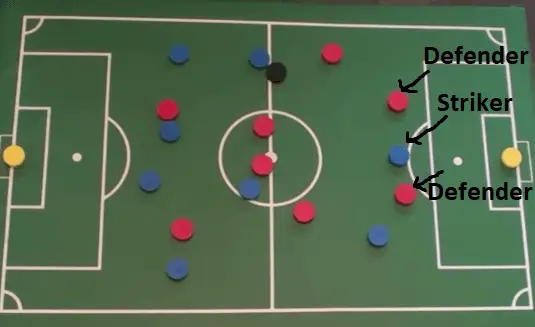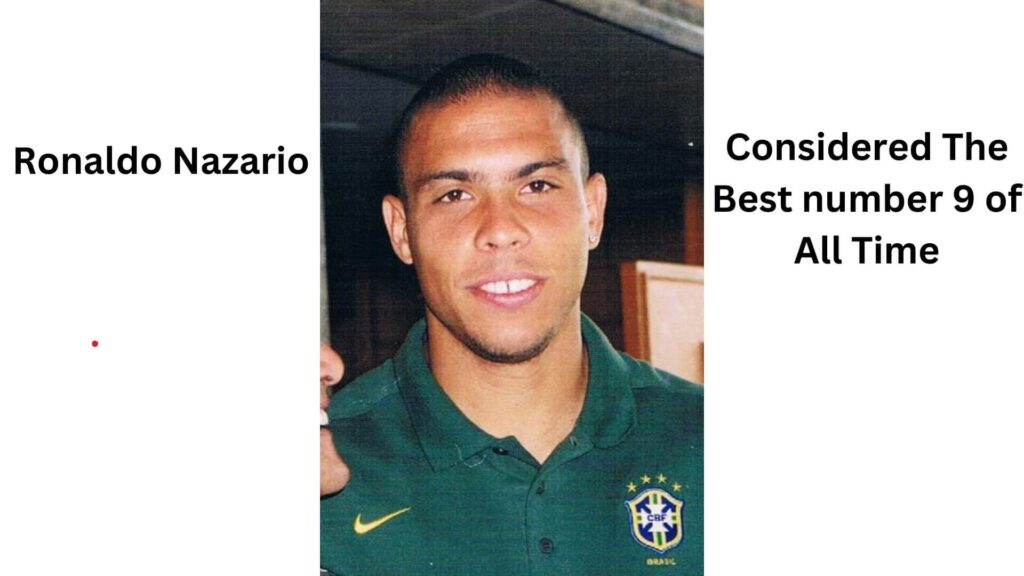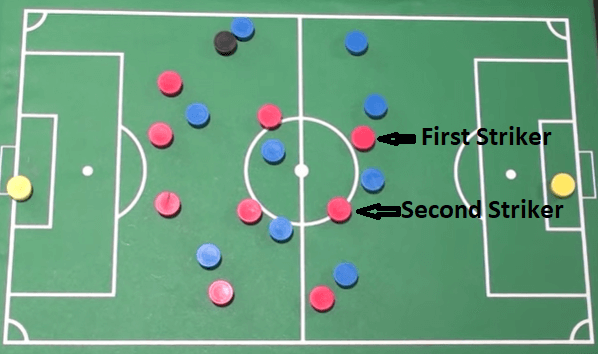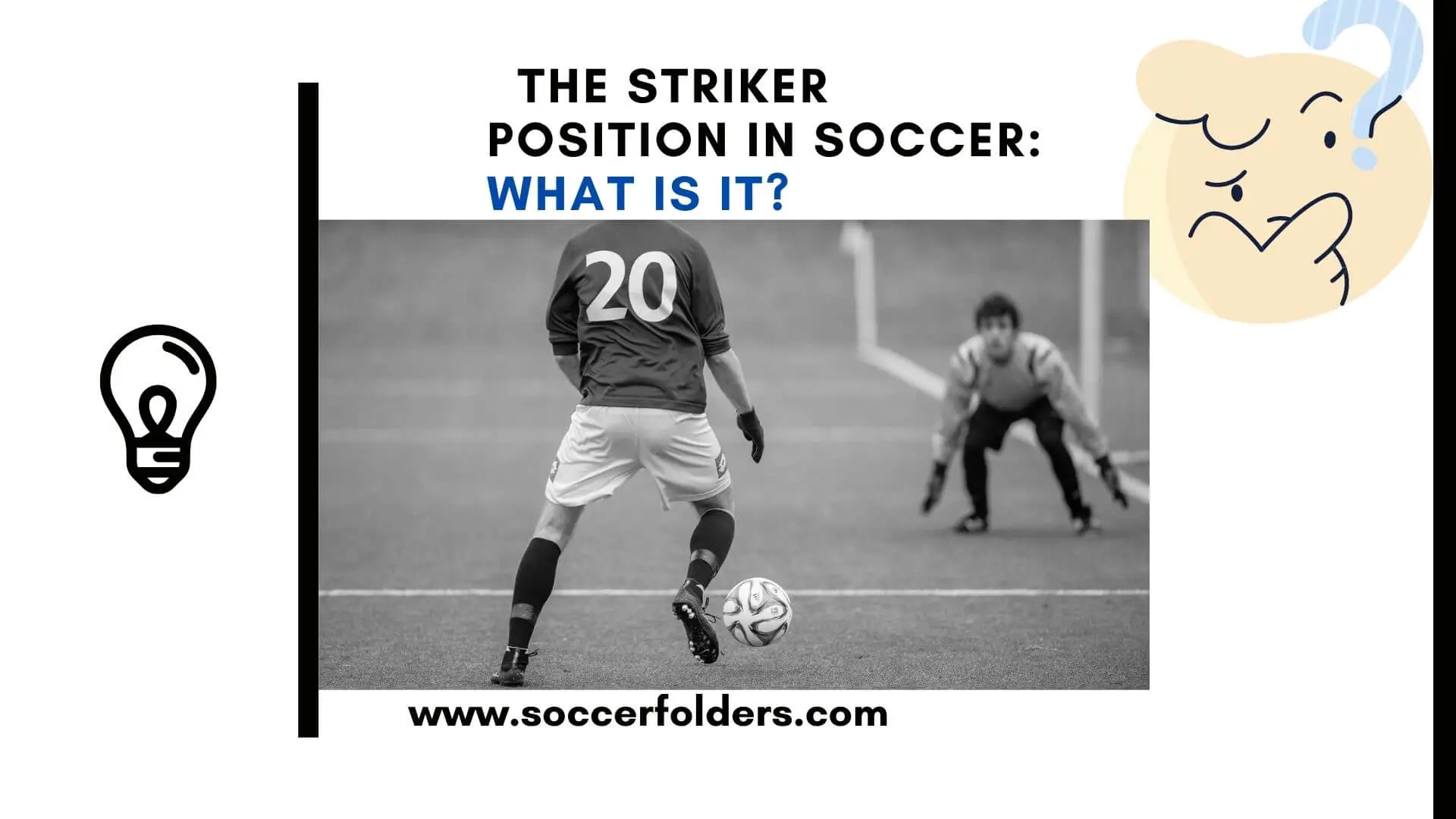The striker position in soccer is the second most important position after the midfield position.
As a striker, you are under constant pressure because the victory of the team depends on you most of the time.
In this article, you are going to learn everything there is to know about the striker position in soccer/football and how you can improve your game to become a better striker.
At the end of this article, you will have a better understanding of this position.
Let’s get started.
- What Is A Striker In Soccer/Football?
-
Striker Positioning and Movement
- Types of Strikers
- Striker’s Role in Team Tactics
- Striker’s Responsibilities
- Striker’s Skills and Techniques
- Developing Striker’s Fitness and Conditioning
- Psychological Aspects of Being a Striker
- Famous Strikers and Their Playing Styles
- Striker Development
- Striker’s Relationship with the Coach
- Striker’s Impact on Game Results
- Striker’s Performance Metrics
- Second Striker In Soccer
- Frequently Asked Questions(FAQ)
- Wrap Up
What Is A Striker In Soccer/Football?
A striker in soccer is a high-positioned player near the opposition’s goal. Their main role is to score goals for their team. They are often recognized for wearing the number 9 jersey. Strikers face immense pressure as the team’s success often depends on their ability to find the back of the net.
The strikers are often more popular than other players because they are in charge of their team’s victory – The whole team and the fans count on them to score goals.
The rest of the team can also score goals, but everybody will blame the striker if there are no goals during a game.
Striker Positioning and Movement

One of the key factors for a successful striker is understanding the importance of positioning and movement on the field. Effective positioning allows the striker to be in the right place at the right time to receive passes and create scoring opportunities.
Here are some key points to consider:
1. Finding the Right Spaces:
A good striker knows how to find spaces in the opposition’s defense. They should look for gaps between defenders or positions where they can receive the ball without too much pressure. By positioning themselves intelligently, strikers can make themselves available for teammates to pass the ball to them.
2. Making Runs:
Timing and making well-timed runs are essential for a striker. By making runs into space or behind the defense, they can catch opponents off guard and create goal-scoring chances. Strikers should be aware of their teammates’ movements and anticipate where the ball will be played to make effective runs.
3. Exploiting Defensive Weaknesses:
Strikers should analyze the opposition’s defense and identify weaknesses to exploit. This could be finding gaps between centre-backs, exploiting the lack of pace of certain defenders, or taking advantage of defensive errors. By capitalizing on these weaknesses, strikers can create opportunities to score goals.
4. Movement in the Box:
Strikers need to be active and constantly on the move inside the penalty area. This includes making diagonal runs, darting towards the near or far post, or pulling defenders away to create space for teammates. Good movement in the box increases the chances of being in the right place to finish crosses or pounce on loose balls.
5. Combining with Teammates:
Effective striking involves understanding the movements and tendencies of teammates. Strikers should develop a strong understanding of midfielders, wingers, and attacking midfielders to create intricate passing combinations and build-up play. This requires good communication, anticipation, and coordination.
By mastering striker positioning and movement, players can increase their goal-scoring opportunities and contribute more effectively to their team’s success.
Practising these skills during training sessions and studying the movements of successful strikers can significantly enhance a player’s ability in the striker role.
Types of Strikers
There are different types of strikers in soccer. A target man is a striker who excels at holding up the ball and providing a physical presence in the opposition’s defense.
A poacher is a striker known for their ability to score goals from close range.
A false nine is a striker who drops deep into midfield to confuse the opposing defenders.
A deep-lying forward combines elements of a striker and an attacking midfielder, operating in a more withdrawn role.
Striker’s Role in Team Tactics
The striker’s movement and positioning are crucial to the team’s strategy.
They need to make intelligent runs to create space for themselves and their teammates.
By stretching the opposition’s defense, they can open up gaps for midfielders and wingers to exploit.
The striker’s ability to link up with teammates and provide accurate passes is also essential for the team’s attacking play.
Striker’s Responsibilities
Scoring goals is the primary responsibility of a striker, but they have additional duties.
They must work hard to press the opposition’s defense and disrupt their buildup play.
Strikers often contribute to set pieces, using their height and aerial ability to win headers.
They can also provide assists by creating scoring opportunities for their teammates with well-timed passes or crosses.
==>> Also read: How do strikers score more goals?
Striker’s Skills and Techniques
Strikers require specific skills to be effective. They must have accurate shooting abilities, being able to finish with both power and finesse.
Good ball control is essential for receiving and manipulating the ball in tight spaces.
Dribbling skills allow them to take on defenders and create scoring opportunities.
Off-the-ball movement, such as making runs and finding spaces, helps them evade markers and get into goal-scoring positions.
Developing Striker’s Fitness and Conditioning
Being a striker demands physical fitness and conditioning.
Strikers need speed to outrun defenders and make penetrating runs.
Agility enables them to change direction quickly and evade tackles.
Strength is important for holding off defenders and winning physical battles.
Endurance allows them to maintain a high level of performance throughout the match, constantly pressuring the opposition’s defense.
Psychological Aspects of Being a Striker
Playing as a striker requires mental strength.
Strikers must have confidence in their abilities, even during goal droughts. They face immense pressure to score goals and lead their team to victory.
Strikers need to make split-second decisions under pressure and remain composed in front of the goal.
Mental resilience is crucial to bounce back from missed opportunities and maintain a positive mindset.
Famous Strikers and Their Playing Styles
Throughout soccer/football history, there have been famous strikers with unique playing styles.
Some were clinical finishers known for their goal-scoring prowess, like Gerd Muller or Gabriel Batistuta.
Others were skilful and agile, capable of dribbling past defenders effortlessly, such as Ronaldo Nazario or Thierry Henry.

Each striker brings their flair and style to the game, leaving a lasting impact on fans and their respective teams.
Striker Development
Aspiring strikers can develop their skills through focused training.
They should practice shooting from various positions and angles to improve accuracy.
Repetitive drills can enhance ball control and dribbling abilities.
Studying professional strikers can provide valuable insights into positioning, movement, and decision-making.
Learning from experienced coaches and players can accelerate the development and understanding of the position.
Striker’s Relationship with the Coach
The relationship between a striker and their coach is crucial for success.
Open communication allows the coach to convey tactical instructions and expectations.
Understanding the coach’s game plan enables the striker to make the right decisions on the field.
The coach’s guidance and feedback help the striker refine their skills, address weaknesses, and maximize their potential.
Also read: What do coaches look for in strikers?
Striker’s Impact on Game Results
A striker’s goals often determine the outcome of a match. Scoring crucial goals can turn the tide in favour of the team.
A single goal can boost team spirit and demoralize the opposition.
The ability to score consistently can make a striker the hero of the team and contribute significantly to the team’s success.
A prime example is Cristiano Ronaldo, who, during his time at Real Madrid, allowed Karim Benzema to take a penalty so that he could score and gain a confidence boost.
By prioritizing Benzema’s goal, Ronaldo demonstrated the understanding that scoring can have a profound psychological impact, not only for the striker but for the team as a whole.
This selfless act showcased Ronaldo’s leadership and his recognition of the importance of confidence in maintaining a striker’s top form.
Striker’s Performance Metrics
Several performance metrics help evaluate a striker’s effectiveness.
Goals scored is the most obvious measure of a striker’s impact.
Shot accuracy reflects their ability to place shots on target.
Conversion rate measures the percentage of shots that result in goals.
Assists showcase the striker’s ability to create scoring opportunities for teammates.
Expected goals (xG) quantifies the quality of chances a striker gets and helps assess their efficiency in front of the goal.
These metrics provide valuable insights into a striker’s performance and contribution to the team.
Second Striker In Soccer
The second striker, just like the main striker, is very highly positioned on the pitch. A team can decide to play with one or 2 strikers depending on the tactic. But having two strikers will lead to more offensive plays and more goals.

A lot of teams use a system with a second striker.
For example, the URUGUAY national team used to play with Cavani and Suarez as strikers.
What Does A Second Striker Do In Soccer?
A second striker can create and score goals. The second striker usually drops back to act as a playmaker and is positioned between the midfielders and the centre forward.
Unlike the first striker who has to be physically imposing, the second striker is known to be small because this position requires an agile player in constant movement to help the first striker.
Some examples of second strikers are Antoine Griezman, Paulo Dybala, Joao Felix…
The advantage of having a second striker is that both strikers will occupy four defenders during a game, leaving space elsewhere for their teammates.
Frequently Asked Questions(FAQ)
1. What Is The Job Of A Striker In Soccer?
The main job of a striker is to score as many goals as possible for their team during a game. They do this by their presence in the opposition’s box and creating space to allow their teammates to pass them the ball so they can score. A striker can also defend, especially when their team conceded a corner – But this is not their primary role.
2. How Much Does A Striker Run In A Soccer Game?
On average, a striker can run 5-6 miles per game on the pitch. A striker runs the most during counter-attacks for their team and when they make a run to receive a pass behind the opposing defense. Other than that, a striker only spends the majority of their time pressing the opposition’s defence. They are not asked to run everywhere on the pitch.
Although they don’t run everywhere on the pitch, the striker is still considered the most tiring position in soccer. Many people do not realize the efforts the striker makes during the 90 minutes of a game.
Also, if a striker finds himself very far from the opposition’s area the majority of the time, this reduces the chances to score goals because their teammates won’t be able to pass them the ball so they can score.
3. Is Striker The Best Position In Soccer?
The main purpose of a soccer game is to score goals and win the game. The Striker position allows you to do that more often than any other position. Plus, strikers are often the most well-known players as they are the ones usually leading the team to victory with the goals they score. Therefore, the striker is in the best position in soccer.
There is nothing better than always being the hero of your team. Although the striker doesn’t always score, he is the hero the majority of the time.
4. What To Do As A Striker?
Here are a few tips to be a better striker:
- Know where to position yourself on the pitch.
- Always try to shoot whenever you have the opportunity.
- When your team doesn’t have the ball possession, always press the opposing defence.
- Be aggressive. the opposing defence has to be scared of you
- Always give solutions for your teammates to easily find you.
- Find spaces.
- Always be available to receive the ball even if a defender is marking you.
- Call for the ball in tight spaces.
- Improve your first touch and ball control.
5. What Do Soccer Scouts Look For In A Striker?
If you are trying to be recruited by scouts as a striker, you have to make sure you know where to position yourself on the pitch, you need to have great shooting abilities, and you have to be a clinical finisher. These are the main criteria scouts look for in a striker.
Note that speed isn’t mentioned above because this is not part of the first thing scoots look for in a striker. But, of course, being a fast striker has an advantage when you are being approached by scoots.
6. What Is The Difference Between A Forward And A Striker In Soccer?
The difference between a forward and a striker is that the striker is positioned nearest to the opposition goal, but a forward is not. A forward is any player that plays in an attacking position. So, forward is designed to refer to any offensive position in a team.
Here are players(positions) considered forward:
- Striker
- Second striker
- Center forward
- Attacking midfielders
- Right and left-wingers
Read my full article about the difference between a forward and a striker in soccer.
Wrap Up
The striker is not the most important but probably the best position in soccer.
Playing as a striker involves a lot of responsibilities as the direction of the game depends on you most of the time. If you are a striker, you have to make sure to score a minimum of one goal per game. If you don’t, you are going to be criticized.
So, the striker position in soccer involves a lot of pressure.
I hope you have gained value from this article.
Are you a striker? Are you trying to become a striker? What’s your favourite position in soccer/football? Let us know in the comment section below.


